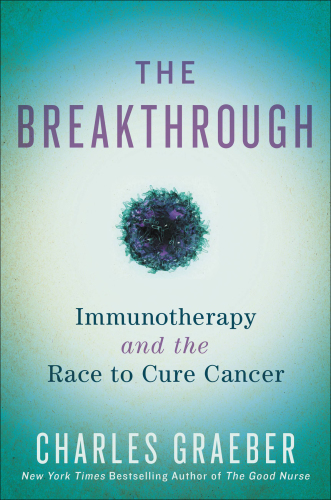
The Breakthrough
Immunotherapy and the Race to Cure Cancer
- اطلاعات
- نقد و بررسی
- دیدگاه کاربران
نقد و بررسی

September 15, 2018
Imagine a vaccine that could cure cancer. As this book reports, that possibility may not be far off.Cancer treatment has long relied on "cut, burn, and poison" methods: surgery, which science journalist Graeber (The Good Nurse: A True Story of Medicine, Madness, and Murder, 2013) notes has been with us for thousands of years, coupled with the more modern radiation therapy and chemotherapy. Immunotherapy leverages the body's natural defense systems, made up of hundreds of millions of cells that are constantly "searching [for] and destroying the invaders that make us sick and the body cells that have become infected, mutated, or defective"--all of which describe cancer. Immunotherapy, in short, unlocks the natural-born cancer killer within, which is no easy task, inasmuch as a hallmark of cancer is its ability to lurk within the body undetected until, at least of old, it is too late. As the author chronicles, scientists have yet to completely understand the workings of the T cell "as the serial-killing attacker of foreign cells," but they have figured out what switches that cell on: a system of responses that are "something like how multiple keys are required to unlock a nuclear button or to open a safe deposit box." This helps moderate a constant danger that the immune system responses can sometimes lead to autoimmune diseases, where the cells lock onto the wrong thing; thus the "many redundancies and fail-safe feedback loops built into the immune response." Enough has been learned that previously discarded immunotherapies are being studied to determine whether they would work "with the brakes off," after having been paired with a "checkpoint inhibitor." Graeber reports that immunology researchers are promising more soon--more drugs, more fast-tracking to get therapies into hospitals, more "biomarkers to better describe cancer with molecular specificity." Though sometimes clumsily written, the book offers hope for more effective treatments in the near future.A readable survey of the emerging field of immunotherapy in cancer treatment.
COPYRIGHT(2018) Kirkus Reviews, ALL RIGHTS RESERVED.

September 24, 2018
“Hype can be dangerous, just as false hope can be cruel,” journalist Graeber (The Good Nurse) writes in this lucid and informed report on how doctors and medical researchers, advancing beyond a “cut, burn, and poison” approach to fighting cancer, discovered how to use the human immune response to attack mutant cells. Graeber recalls the “crushing failure” cancer immunotherapy suffered in the 1970s, and the giddy over-optimism seen in the 1980s before cancer breakthroughs such as interferon drugs went bust and immunotherapy research was left to a “handful of true believers.” His narrative moves from the grueling stories of research experiments and drug trials—through which pharmaceutical companies “spread their bets” over a variety of potential drugs—to the even more grueling experiences of cancer patients. Graeber focuses on the scientific developments and the “mind-blowing possibilities,” such as cellular therapy, in which living cells are used to fight cancer. Noting there are 940 immunotherapeutic drugs being tested by more than a half million patients, with another 1,064 drugs in the preclinical stage, he predicts the cancer cure lies in the personalized immunotherapy route. Graeber gives readers a basis for both understanding the challenges involved and for cautious optimism that a cure can be found. Agent: Susan Golomb, Writers House.

October 15, 2018
Cut, burn, poison. Harsh-sounding traditional treatments (surgery, radiation, chemotherapy) for cancer that identify malignancy as the cruel adversary it is. An estimated half of cancer patients cannot currently be cured. Immunotherapy is poised to be a uniquely useful treatment. It essentially weaponizes and unleashes the body's immune system so that antibodies serve as microscopic guided missiles and re-engineered T cells work as supersoldiers that recognize and attack tumors. Graeber concisely reviews the science of cancer and the natural functioning of the immune system. He introduces researchers and oncologists in the field and provides stories of patients with melanoma, kidney cancer, sarcoma, and leukemia. Two major developments in cancer immunotherapy are checkpoint inhibitors (e.g., FDA-approved ipilimumab) and chimeric antigen receptor T cells (CAR-T), an ingenious laboratory modification of T cells extracted from a patient with cancer and then injected back into that patient. Each CAR-T cell is capable of destroying up to 100,000 cancer cells. The risks of tinkering with an intricate immune system are obviously high, even perilous. But the potential reward is a cure. Exciting reading.(Reprinted with permission of Booklist, copyright 2018, American Library Association.)




دیدگاه کاربران